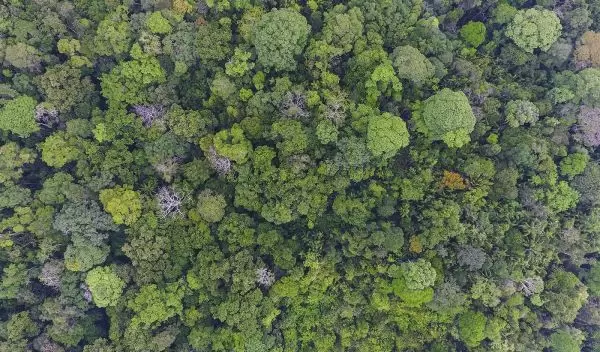
Long-lived tropical trees play outsized role in carbon storage
Trees that grow fast, live long lives and reproduce slowly account for the bulk of the biomass -- and carbon storage -- in some tropical rainforests, a team of scientists reports in a paper published in the journal Science. The finding that these trees, called long-lived pioneers, play a much larger role in carbon storage than previously thought may have implications for efforts to preserve forests as a strategy to fight climate change.
"People have been arguing about whether these long-lived pioneers contribute much to carbon storage over the long term," said Caroline Farrior, an ecologist at The University of Texas at Austin whose research was supported by a National Science Foundation grant. "We were surprised to find that they do."
It's unclear how much tropical rainforests can help soak up excess atmospheric carbon dioxide produced by burning fossil fuels. But the new study provides insights about the role of different species of trees in carbon storage.
Using more than 30 years of data collected from a tropical rainforest in Panama, the team has uncovered some key traits of trees that, when integrated into computer models related to climate change, improve the models' accuracy. Now the scientists are answering questions about what drives forest composition over time and what factors affect carbon storage.
Most existing models used to forecast global climate decades into the future represent the trees in a forest as basically all the same.
"This analysis shows that is not good enough for tropical forests, and provides a way forward," Farrior said. "We show that the variation in tropical forest species' growth, survival and reproduction is important for predicting forest carbon storage."
Added Betsy von Holle, a program director in NSF's Division of Environmental Biology, "This is a substantial improvement in forest models. It has major implications for tropical forest restoration planning and management, as well as global climate modeling."


